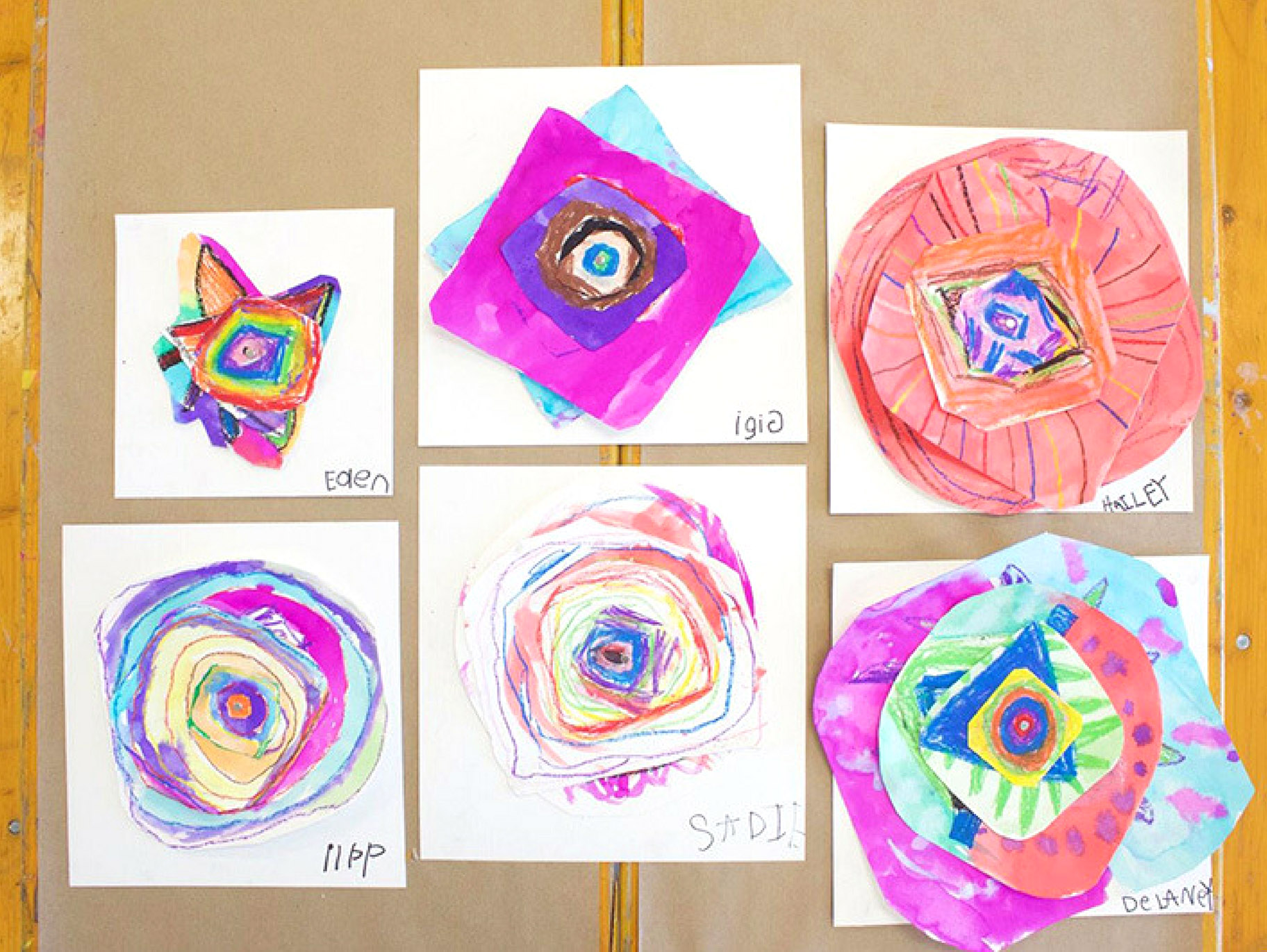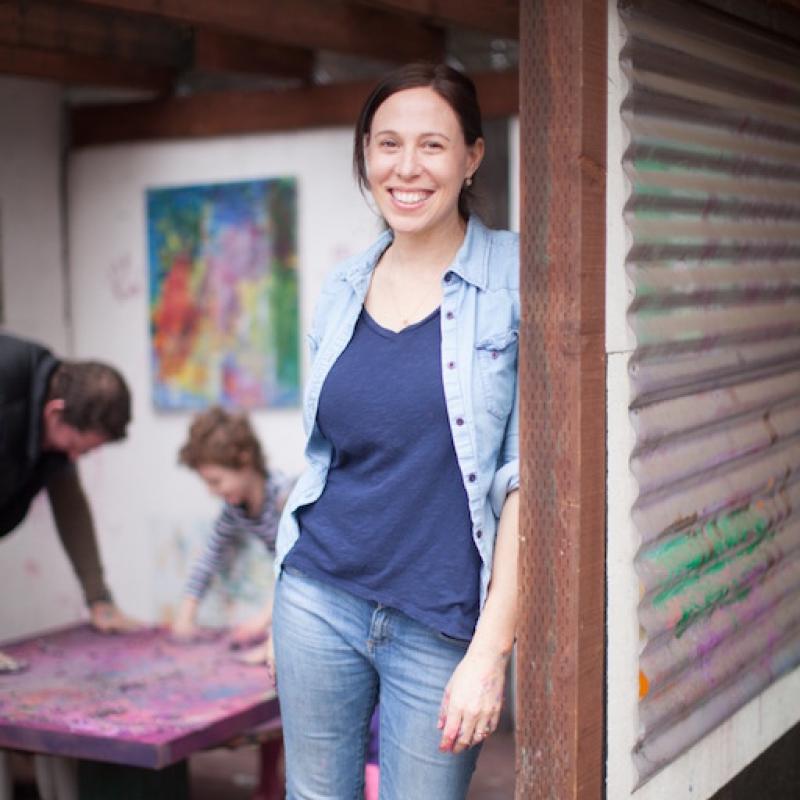
The first step to making your Kandinsky inspired circles is to demonstrate how to make concentric circles, circles that share the same center. I started with a circle in the center with the oil pastels and then with a new color that went around the center forming another circle and repeated several times. It’s ok to leave white space on your paper.
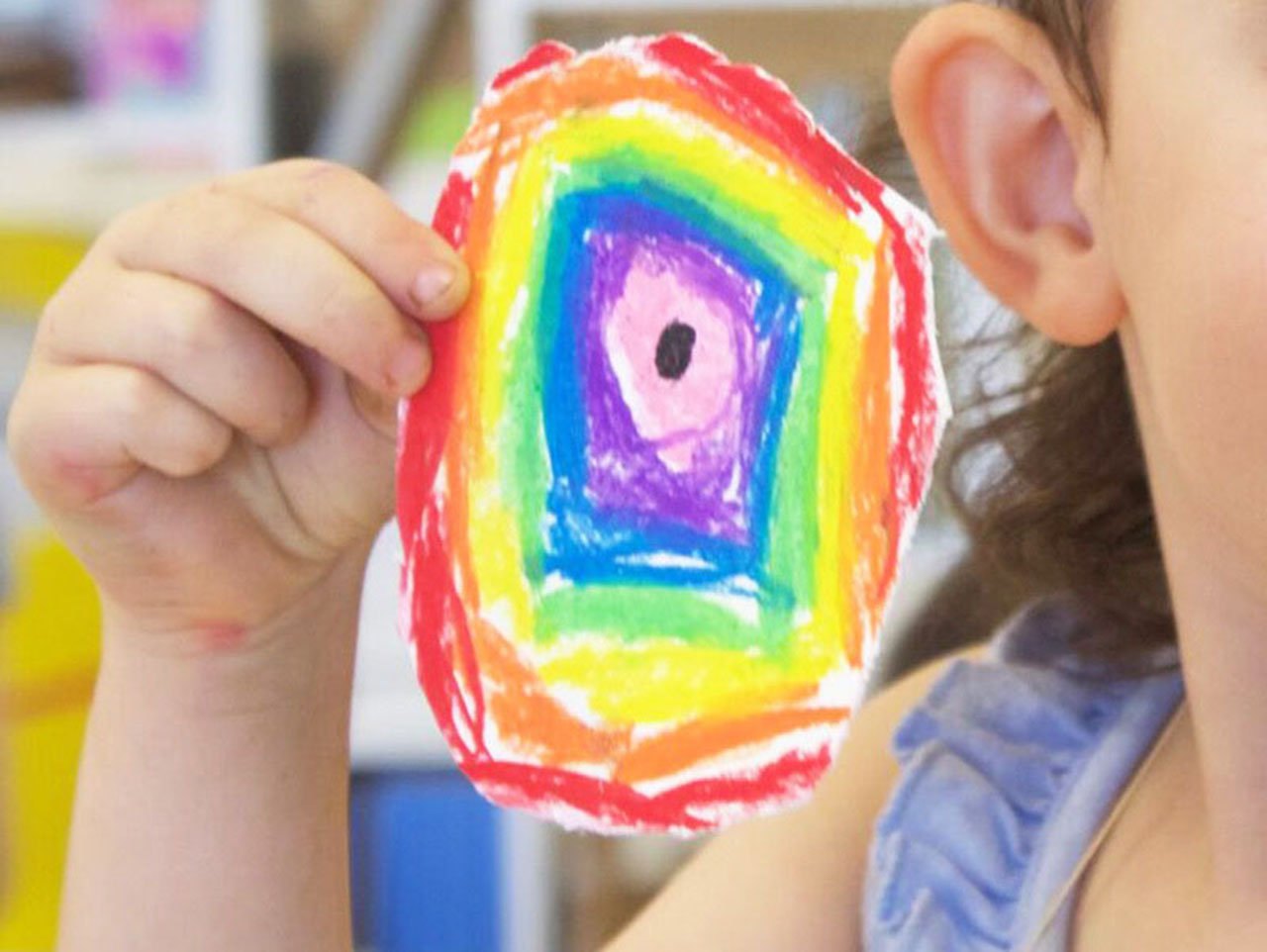
Each student was given four white squares of watercolor paper. A small, medium, large and then a background paper. After the demonstration they were invited to create their own Kandinsky circles in each square, except the background square.
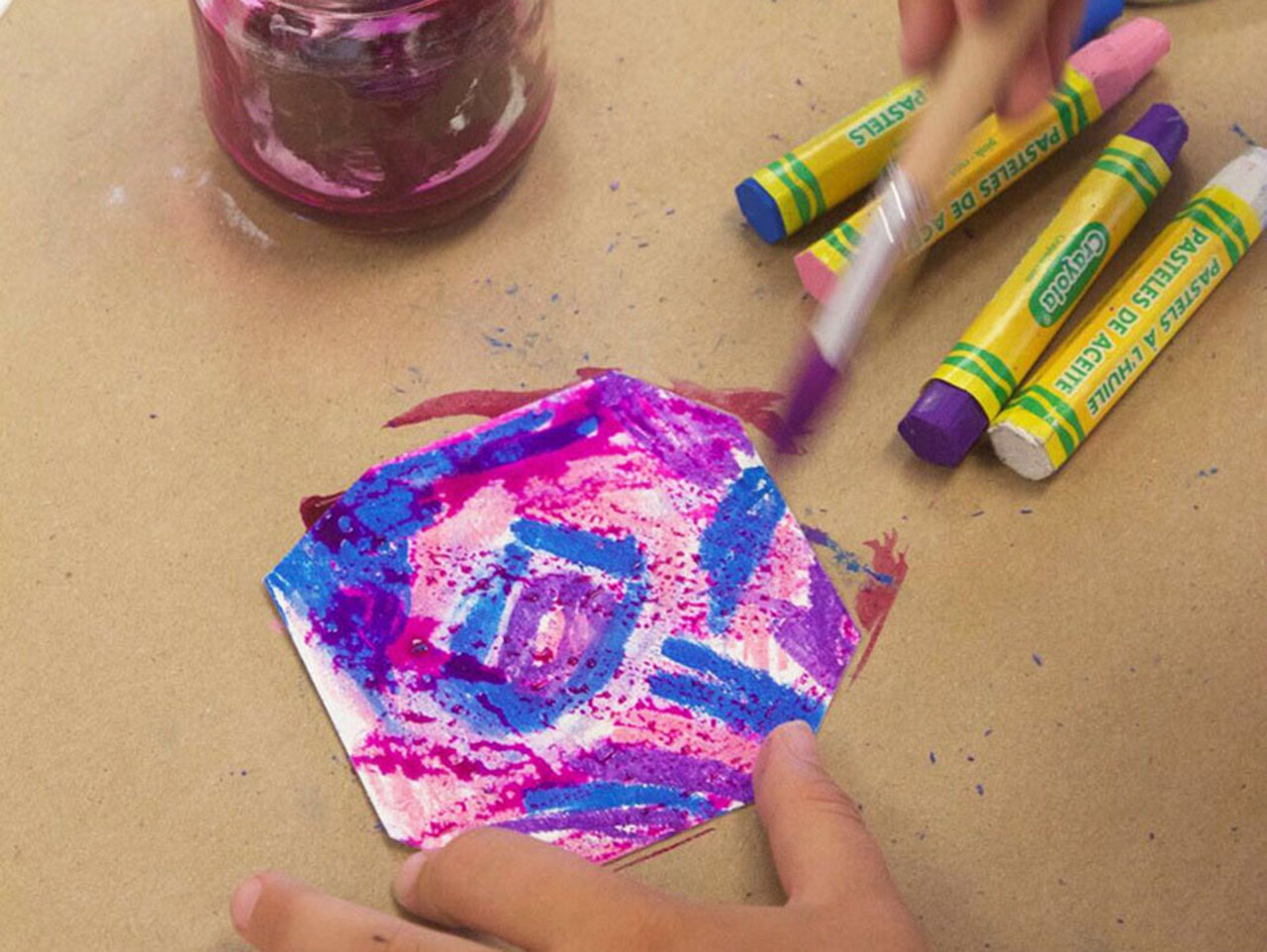

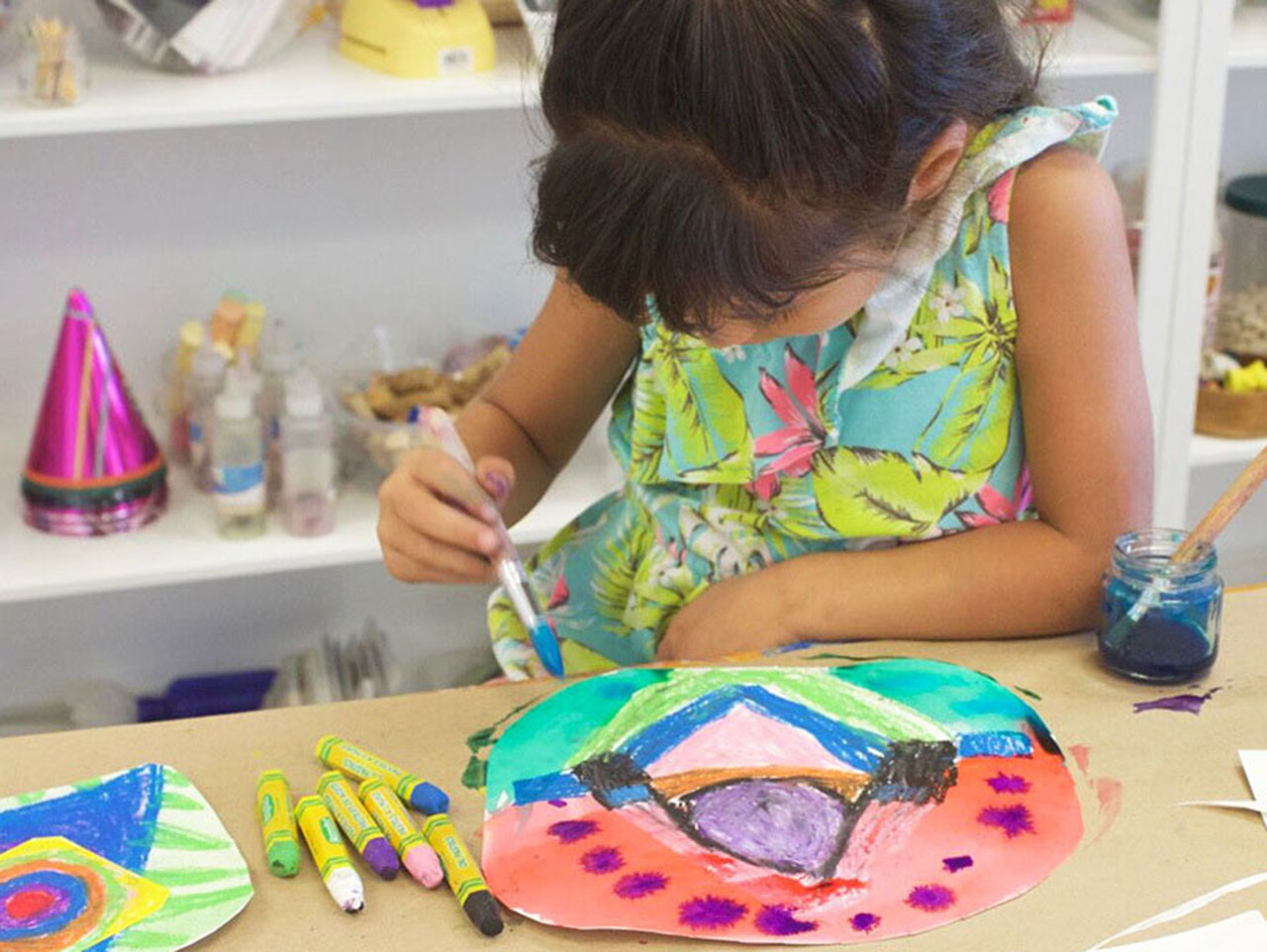
After using the pastels to color the circles, go over each one with liquid watercolors. I always like to tell my students that oil and water are not friends. When the watercolors go over the pastels, the pastels say “Hey, get off me, you’re not my friend.” The kids really like it.
Some kids really stuck to style of Kandinsky while creating all of their circles, while other kids went out on their own making elaborate details in their circles.
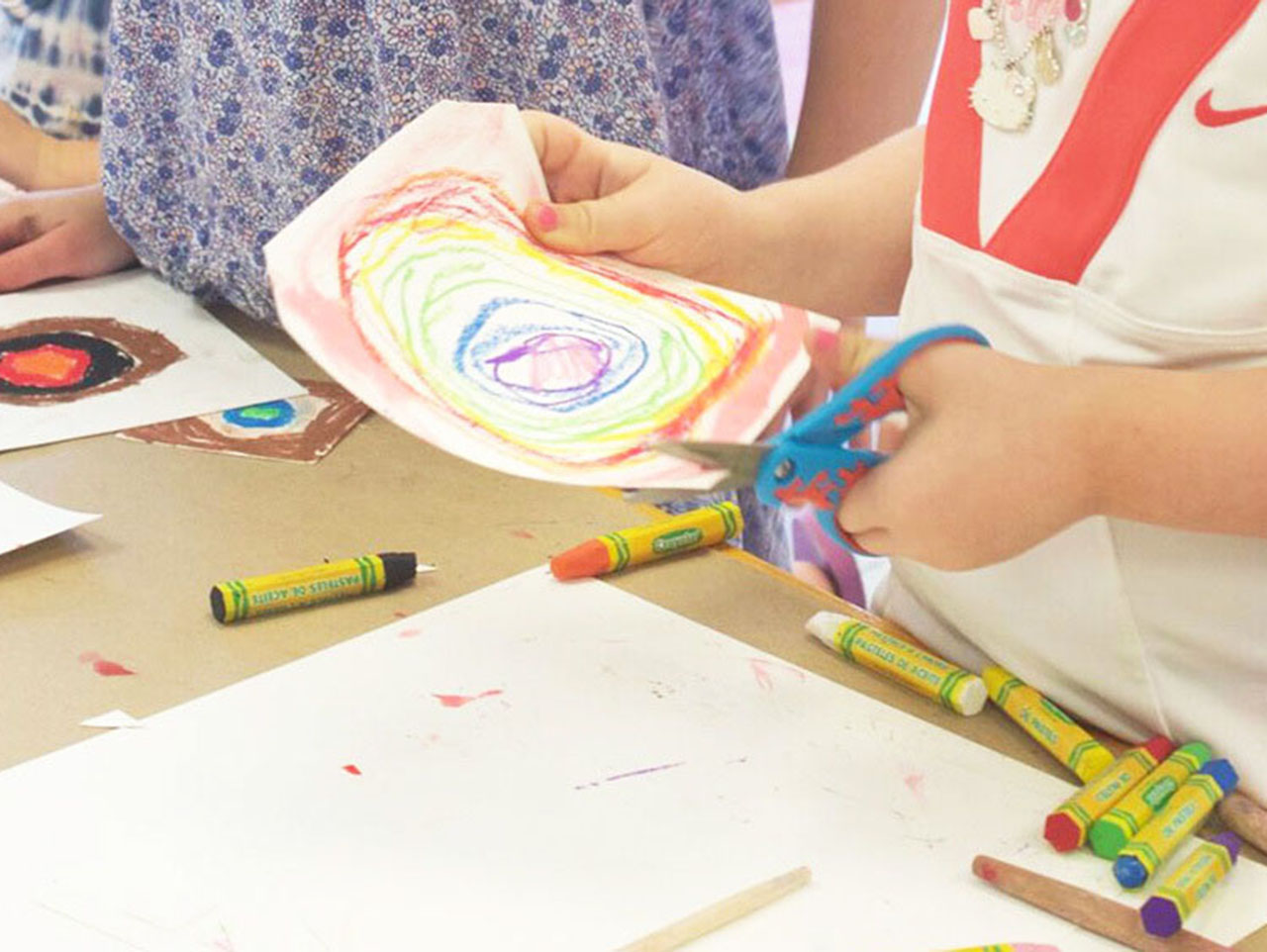
Have your students cut off the corners of their squares on a curve to form a circle. This is a great way to turn a square into a circle if kids are younger and aren’t able to cut a circle without making it really tiny.
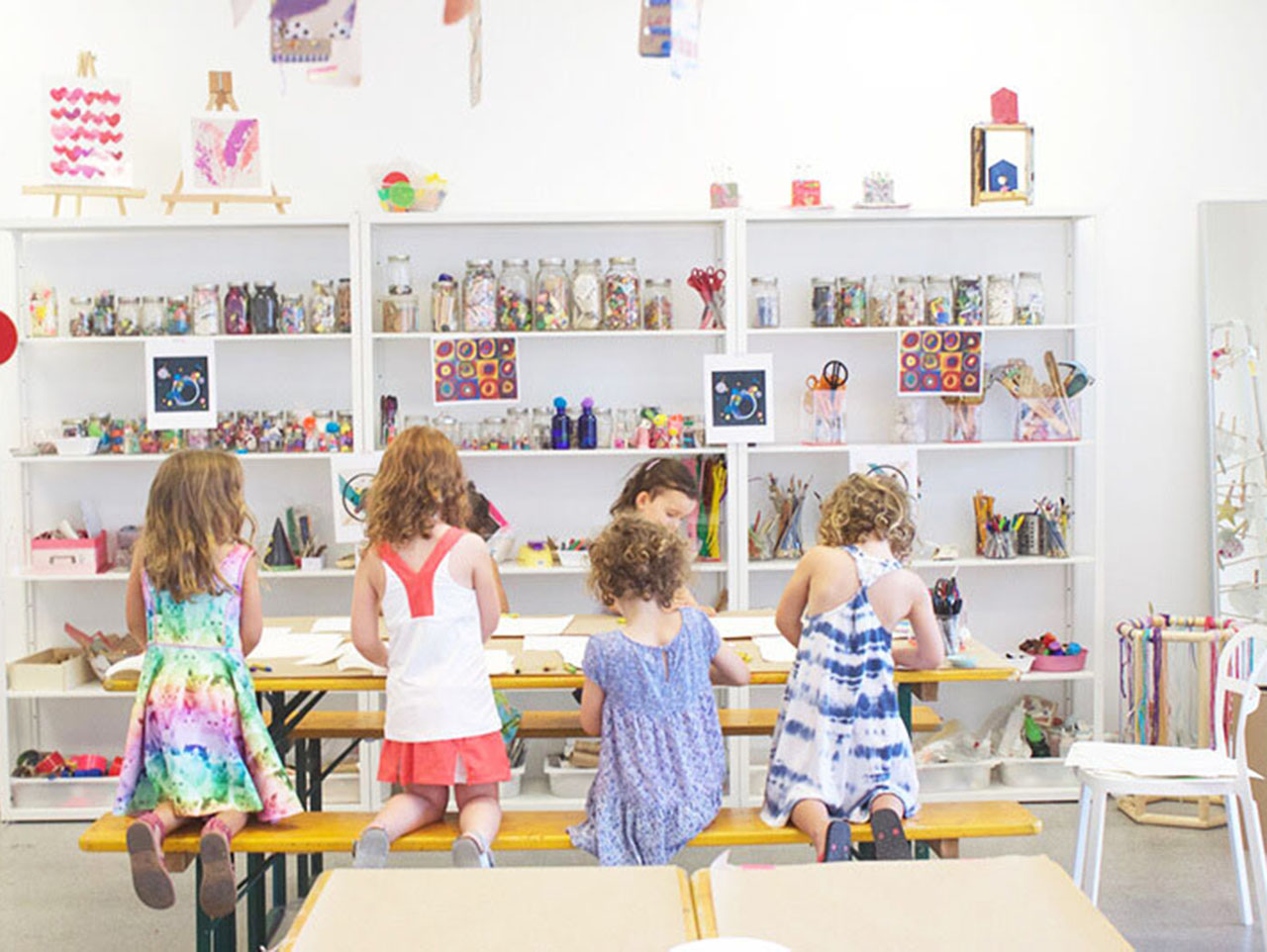
Once you have all three of your circles, pile them onto your back ground smallest to largest and puncture the brad through the center. This will allow all the circles to move when they are complete.
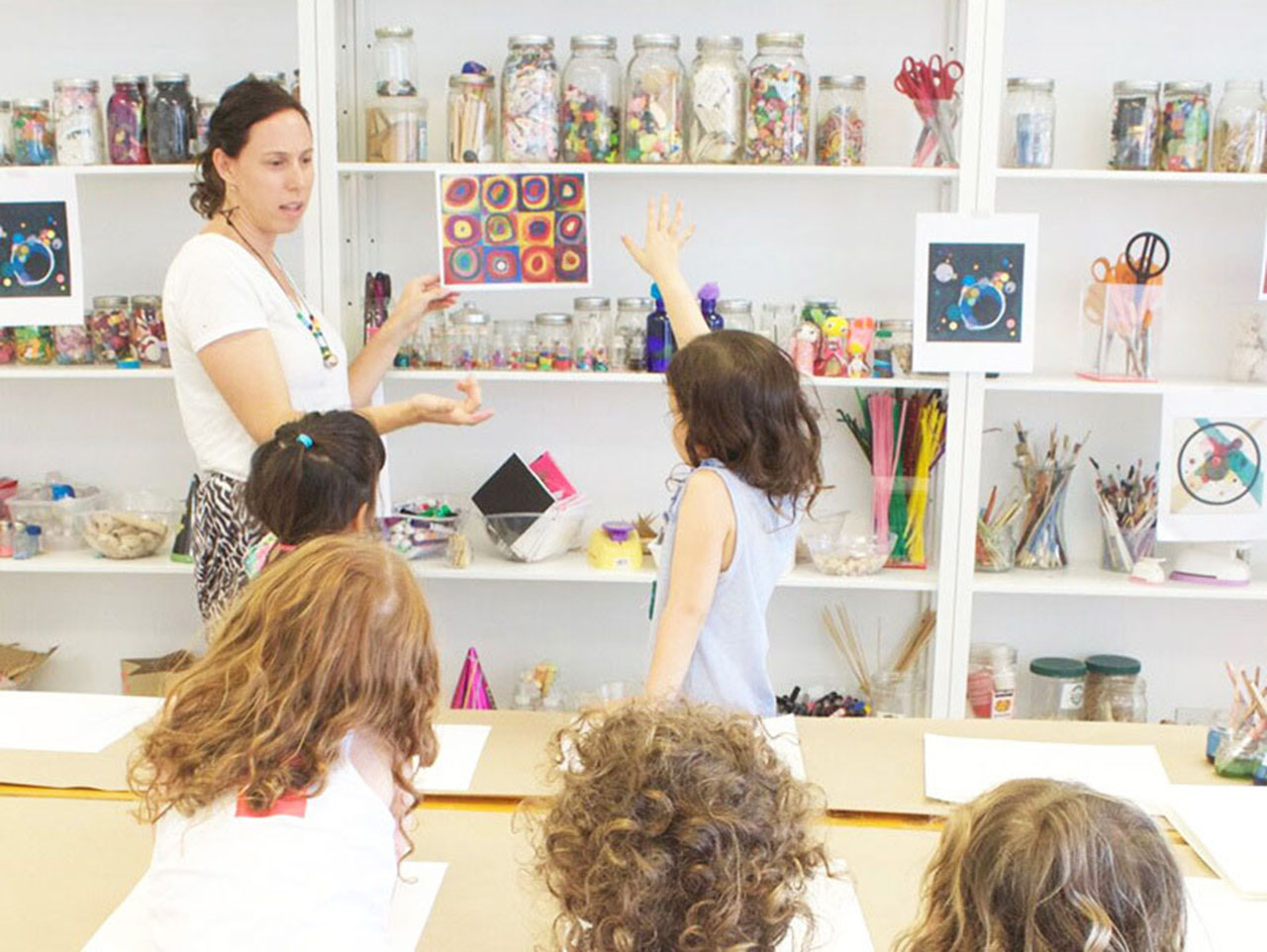


All the students in class were successful and so proud of their art inspired by Wassily Kandinsky. I hope you give this a try. It was a great experience from start to finish.

The first step to making your Kandinsky inspired circles is to demonstrate how to make concentric circles, circles that share the same center. I started with a circle in the center with the oil pastels and then with a new color that went around the center forming another circle and repeated several times. It’s ok to leave white space on your paper.

Each student was given four white squares of watercolor paper. A small, medium, large and then a background paper. After the demonstration they were invited to create their own Kandinsky circles in each square, except the background square.



After using the pastels to color the circles, go over each one with liquid watercolors. I always like to tell my students that oil and water are not friends. When the watercolors go over the pastels, the pastels say “Hey, get off me, you’re not my friend.” The kids really like it.
Some kids really stuck to style of Kandinsky while creating all of their circles, while other kids went out on their own making elaborate details in their circles.

Have your students cut off the corners of their squares on a curve to form a circle. This is a great way to turn a square into a circle if kids are younger and aren’t able to cut a circle without making it really tiny.

Once you have all three of your circles, pile them onto your back ground smallest to largest and puncture the brad through the center. This will allow all the circles to move when they are complete.



All the students in class were successful and so proud of their art inspired by Wassily Kandinsky. I hope you give this a try. It was a great experience from start to finish.

